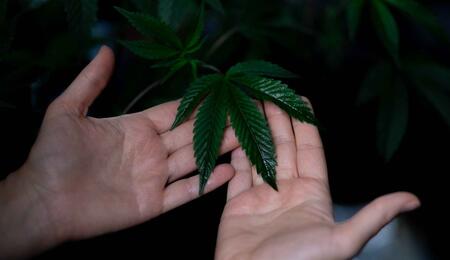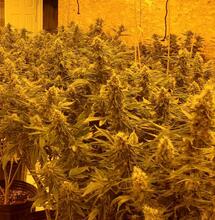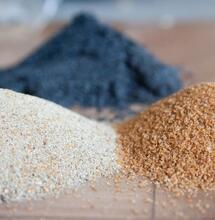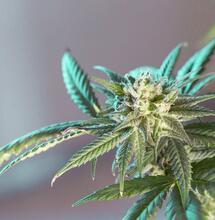The Need for Potassium

Potassium is an essential mineral that nourishes all living cells. In humans, Potassium facilitates the normal function of the nerves and muscles and ensures a healthy and regular heartbeat. At cellular level, Potassium helps cell nutrition and waste management out of cells. In plants, Potassium again has a significant role in critical cellular processes. It's an essential element that supports functions such as photosynthesis and reproduction. Potassium supports the working of the stomata during photosynthesis and regulates water within the plant structure. Without Potassium, plants will inevitably wilt.
The K in the N-P-K formula stands for Potassium. Often referred to as the "quality nutrient," cannabis plants need Potassium in large quantities, just like Nitrogen and Phosphorus. Potassium determines the overall quality, color, shape and sometimes also taste of plants. It also plays a role in the plant immune system and its ability to produce more crops. Potassium acts as an enzyme activator and is an important source of energy for a number of chemical processes within the plant tissue.
NPK nutrient feeds are the major source of Potassium for your cannabis plants, however, there are other solutions such as kelp, fish meal, and wood ash, all of which are organic and rich in the element.
How to spot Potassium deficiency?
The symptoms of Potassium deficiency are hard to spot when plants are grown in a medium. However, a general underperformance of the plant may mean there's a Potassium deficiency going on. You can be more at ease if you grow in hydroponics as Potassium deficiency is very unlikely to happen with this medium.
Potassium deficiency may not affect the height of plants, however, it will impair the growth of other components such as leaves and fruits. Abnormalities will most certainly be visible on the leaves, which is also the case with other deficiency types. If you are uncertain of the diagnosis, reach out to other growers to confirm lack of Potassium is the issue.
The following symptoms may indicate a severe Potassium shortage:
- Leaf tips are burned
- Leaves turn brown or pale
- Dark spots begin to form on leaves
- Lower leaves are yellowing
How to fix Potassium deficiency?
A bloom booster would work as a fast and effective solution to address a Potassium deficiency. The roots will quickly absorb the nutrient feed and help the plant recover.
An excess of calcium or nitrogen may also affect how plants absorb Potassium. This is why it's also important to check water pH. Flushing will help in this case, but you need to continue monitoring your crops closely to see if they become more vigorous than before.
The presence of excess Potassium should not lead to serious complications in the growth process, however, it can cause disbalance in how the plant absorbs other nutrients such as Nitrogen, Calcium, and Magnesium.
How to use organic Potassium solutions?
As earlier mentioned, kelp, fish meal, and wood ash are three organic nutrient feeds that can boost the levels of Potassium in your cannabis garden.
You can use kelp in foliar feed, applying liquid fertilizer directly to the leaves, which the plants will absorb directly through the stomata and epidermis. Fish meal can also be used in a foliar spray, or you can spread it around the soil (for example, 5 lbs per acre or 3 lbs per 100 square feet around plants).
Wood ash can be even more effective in increasing Potassium, although you need to be careful not to contaminate the soil with salt (in which case you flush). Wood ash can be used dry or mixed in water. When dry, ash only needs to be lightly scattered around your cannabis plants. If you mix it in water, let it sit for a couple of hours before dispensing it in the garden. For outdoor crops, wood ash also works out as an excellent solution to deter unwanted visitors such as slugs and snails.







